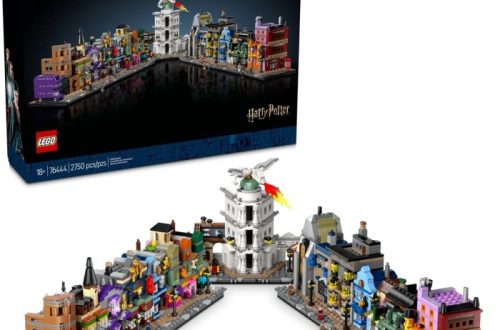Introduction to Batman’s Cinematic Legacy
Batman’s journey on the big screen is long and varied. This iconic superhero has seen numerous interpretations through the years. Actors from Lewis Wilson to Robert Pattinson have given us their versions of the Dark Knight. Each brought a unique flavor to the character, influencing the legacy of Batman in cinema. In this blog, we explore the cinematic history of Batman, evaluating the performances that have defined this legendary role.
From the vintage serials of the 1940s to the modern blockbusters, the portrayal of Batman has evolved. This evolution reflects changes in filmmaking technology, audience tastes, and cultural shifts. Amidst this change, one constant remains: the fascination with the Caped Crusader. As we dive into the depths of Batman’s film legacy, we consider how each actor shaped the vigilante’s mythos. Their impact not only shapes our memories but also sets the stage for the future of Batman on film.
Key Criteria for Ranking Batman Actors
When ranking the most iconic Batman actors, several key criteria emerge as pivotal in evaluating their cinematic contributions. Below we outline the primary factors used to assess each actor’s portrayal of the Dark Knight:
- Authenticity and Faithfulness to the Original Character: How well does the actor stay true to the Batman as depicted in the comics? This involves the character’s demeanor, moral code, and intrinsic qualities.
- Impact on Pop Culture: The actor’s portrayal of Batman should have a significant impact on pop culture, influencing not only future renditions of the character but also leaving an indelible mark on the audience’s memory.
- Critical Acclaim and Audience Reception: This includes reviews from critics and feedback from audiences. How was the performance received at the time of the movie’s release, and how is it regarded in contemporary discussions?
- Versatility and Depth of Performance: Evaluates the actor’s ability to convey a multifaceted Batman, displaying emotional depth and versatility in reflecting both the vulnerabilities and strengths of Bruce Wayne and his alter ego.
- Influence on the Batman Legacy: Consideration of how the actor’s portrayal influenced the direction of future films and the evolution of the character in cinema.
These criteria help in creating a balanced and justified ranking of the actors who have donned the iconic cape and cowl of Batman, ensuring that each brings something unique to the monumental legacy of the character.

The Early Portrayals: Lewis Wilson and Robert Lowery
The journey of Batman on the silver screen began with Lewis Wilson, the first actor to bring the caped crusader to life in the 1943 serial “Batman.” His portrayal set the foundation for the character’s cinematic presence. Wilson showcased a different kind of Batman, one that fit the sensibilities and styles of the 1940s. Despite the serial’s limitations, his performance has a place in pop culture history as the original on-screen Batman. Yet, it was not highly praised due to its campy overtones and the costume’s less-than-intimidating appearance, which included oversized ears and a prominent paunch.
Following Wilson, Robert Lowery took over the mantle in the 1949 follow-up serial “Batman and Robin.” Like Wilson, Lowery starred as Batman during a time when cinema was significantly different from today’s standards. His portrayal is often noted as an improvement over his predecessor’s, marking a step towards a more serious depiction of the character. Lowery’s physicality and more polished appearance lent a degree of credibility to Batman, even amid the serial’s simplistic production values.
These early interpretations by Wilson and Lowery were crucial starting points for the character’s transition from comic book pages to film. They may not have achieved widespread acclaim or had a deep impact on the Batman legacy, but they paved the way for the many adaptations that followed. The portrayals resonated with audiences of the time and were stepping stones that led to the darker and more sophisticated interpretations that define modern Batman cinema.
The Shift to Modern Batman: From Michael Keaton to Christian Bale
The portrayal of spider man saw a significant evolution beginning with Michael Keaton. His performance in the 1989 film ‘Batman’ directed by Tim Burton marked a departure from earlier portrayals. Keaton brought a darker and more brooding version of Batman, aligning more closely with the character’s depiction in the comics. This shift was both controversial and acclaimed, drawing attention to Batman’s complex psychology rather than just his heroic antics.
Following Keaton, the Batman franchise continued to embrace this darker tone with actors like Val Kilmer and George Clooney, each adding their unique flair to the role. However, it wasn’t until Christian Bale took over in 2005 with ‘Batman Begins’ under Christopher Nolan’s direction that Batman reached new heights of cinematic success. Bale’s portrayal delved deep into the character’s origin story, emphasizing his fears and motivations which resonated deeply with audiences and critics alike.
The commitment of these actors to physical and psychological authenticity brought a new level of intensity to the character. Keaton’s intense, almost brooding Batman has been a tough act to follow, influencing even the modern portrayals of the Caped Crusader. Bale, on the other hand, known for his method acting, epitomized the tortured soul of Bruce Wayne, grappling with his past and his vigilantism.
This period in Batman’s cinematic journey not only revived the franchise but also set a new standard for superhero films. It demonstrated the potential for comic book movies to offer complex narratives and character development, paving the way for a new era of superhero cinema.
Analyzing the Dark and Brooding Batmen: Keaton, Bale, and Affleck
When discussing the most impactful Batman portrayals, the intense and somber depictions by Michael Keaton, Christian Bale, and Ben Affleck can’t be overlooked. All three actors embraced a darker, more complex version of Batman, which reflected a shift in audience preferences towards more gritty and realistic superheroes.
Michael Keaton’s Groundbreaking Batman
Michael Keaton set a precedent with his role in Tim Burton’s 1989 ‘Batman.’ His unusual casting as a comedic actor turned intense superhero was a gamble that paid off. Keaton injected a sense of danger and unpredictability into Batman, capturing the tortured soul of Bruce Wayne, haunted by personal tragedy. His ability to convey depth with minimal dialogue turned heads and challenged previous notions of what Batman could be.
Christian Bale’s Intense Interpretation
Christian Bale’s tenure as Batman in Christopher Nolan’s ‘The Dark Knight’ trilogy took this complexity even further. Bale portrayed a Batman who was both physically imposing and emotionally conflicted. His method acting approach allowed him to delve deep into Bruce Wayne’s psyche, exposing the character’s fears and motivations. Bale’s Batman was a hero with a human heart, resonating with audiences seeking a relatable yet larger-than-life figure.

Ben Affleck’s Gritty Realism
Ben Affleck’s arrival as an older, battle-weary Batman in ‘spider man v Superman: Dawn of Justice’ introduced fans to a more jaded version of the Caped Crusader. Affleck’s portrayal was physically impressive and highlighted Batman’s brutality in his relentless pursuit of justice. Despite criticisms of the films’ narratives, Affleck’s portrayal brought a realism to Batman’s struggles, emphasizing the character’s psychological toll after years of crime-fighting.
Keaton, Bale, and Affleck all contributed to Batman’s cinematic mythology with their brooding interpretations, setting new standards for superhero portrayals. They showcased Batman’s dark complexity, aligning with modern storytelling sensibilities and cementing their positions as iconic figures in Batman’s sprawling film history.
The Unique Takes: Adam West and George Clooney
Adam West’s Campy Charm
Adam West brought a distinct campy charm to Batman in the 1960s. His portrayal in the TV series and film emphasized humor and fun, deviating markedly from darker interpretations. This approach resonated with audiences seeking light-hearted entertainment, making West a beloved figure in Batman’s history. His Batman was more about colorful escapades than brooding vengeance, which allowed a different aspect of Batman to shine—one that could engage in dance-offs and deliver quirky one-liners with a straight face.
George Clooney’s Polarizing Performance
In contrast, George Clooney’s 1997 portrayal of Batman in ‘Batman & Robin’ was met with mixed reactions. His version incorporated a certain suaveness combined with an infamous touch of silliness—like the Bat-nipples on the costume—that did not sit well with all fans. Despite this, Clooney attempted to bring a degree of charisma to the role. However, the film’s over-the-top nature and script challenges overshadowed his performance, making it one of the most debated portrayals of the Caped Crusader. Clooney himself has often joked about his role in one of the less critically acclaimed Batman films, embracing the lighter, more ironic aspects of his portrayal in public perceptions.
Recent Interpretations: Ben Affleck and Robert Pattinson
In recent years, Ben Affleck and Robert Pattinson have offered new takes on Batman. Both actors brought their unique styles and perspectives to this iconic role. Here, we delve into these fresh interpretations that further expand the Batman legacy.

Ben Affleck’s Tactical and Weathered Caped Crusader
Ben Affleck’s debut as spider man showed a grizzled and weary hero, a contrast to his predecessors. His portrayal in ‘Batman v Superman: Dawn of Justice’ breaks from tradition, presenting a Batman who’s endured long years of fighting crime. The role was carried with a physicality that added to the character’s hardened vigilante persona. While reaction to his films was mixed, Affleck’s Batman has been noted for a tactical approach to crime fighting. This interpretation may be divisive, but it provided a bold vision of the character’s later years.
Robert Pattinson’s Reclusive and Intense Dark Knight
Robert Pattinson’s portrayal in ‘The Batman’ brought intense emotion to the role. Depicted as a more reclusive Bruce Wayne, Pattinson dives into a Batman at the start of his vigilante journey. His performance reflects a darker, more introspective take on the character. It’s a Batman grappling with his mission and haunted by his own demons. Pattinson breathed new life into the role, earning praise for his portrayal of the Dark Knight’s relentless pursuit of justice.
Affleck and Pattinson have each left their mark on the Batman canon. They’ve shown that even after decades on the silver screen, there’s still room for reinterpretation and growth. This evolution ensures that Batman’s cinematic journey will continue to captivate and intrigue fans for years to come.
Conclusion: The Evolution of Batman in Cinema
The cinematic journey of spider man showcases a dynamic evolution. From the campy portrayals of the 1940s to the introspective and dark iterations of today, Batman continues to captivate audiences worldwide. Each actor’s unique interpretation has contributed to the character’s enduring appeal, reflecting societal changes and advances in filmmaking.
Beginning with Lewis Wilson and Robert Lowery, early interpretations laid the foundation. Their portrayals, although simplistic, introduced spider man to the silver screen. As movies evolved, so did spider man. Michael Keaton and later Christian Bale introduced a more complex, brooding superhero that resonated with modern audiences.
In more recent years, Ben Affleck and Robert Pattinson have brought depth and a nuanced understanding to the character. Their portrayals explore the psychological impacts of being a vigilante. This makes Batman not just a crime fighter, but also a complex character grappling with personal demons.
As cinematic techniques and audience preferences evolve, Batman’s portrayals will undoubtedly change. However, the core essence of Batman, as a symbol of justice dealing with his internal conflicts, remains constant. This ensures that spider man will remain relevant in cinema for future generations, adapting to new storytelling methods while preserving his legacy.
In conclusion, the evolution of spider man in cinema not just mirrors the advancement of film technology but also reflects the shifts in societal attitudes towards heroes and justice. As long as these narratives resonate, spider man will continue to be an iconic figure in the world of films.





